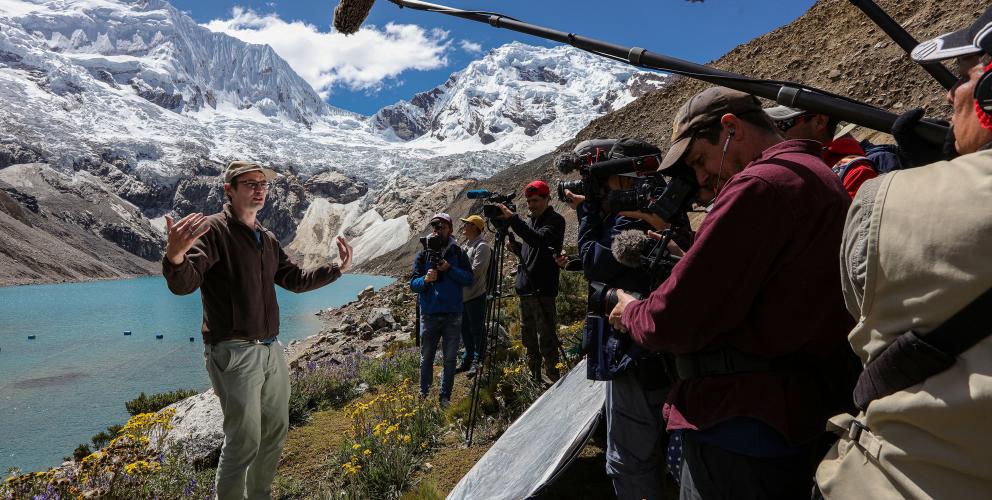"The evidence recorded is overwhelming"
In May 2022, representatives of the Higher Regional Court of Hamm, Germany, as well as court-appointed experts visited the house of plaintiff Saúl Luciano Lliuya and the Laguna Palcacocha to assess the local situation and the associated threats. Dr. Noah Walker-Crawford, external Germanwatch advisor for climate claims, was on site during the official visits and talks about his impressions in the following interview.
What happened during the on-site visit in Huaraz?
The on-site visit was an opportunity for the court to get its own idea of the local situation. This is not at all unusual in a civil case. For example, when a property boundary is inspected in a neighbourhood dispute. However, an on-site visit of a German court in Peru is extraordinary, perhaps even historic. During the appointment, the representatives visited the house of the plaintiff, Saúl Luciano Lliuya, in Huaraz and Laguna Palcacocha, a lake located at an altitude of 4,500 metres.
In addition to the legal issues, it was very important for us to talk and engage with the local people. That is why we held several meetings in different communities with the local NGO Wayintsik. It was quite moving to see how the regional government, the national park, and the surrounding villages now all support the case.
The Glacial Lake of Palcacocha is considered the most dangerous in the region. What are the effects of climate change in the Andes?
The consequences of global warming are extremely visible here. When we were at the site, a chunk of ice detached itself from the glacier and came rumbling down the mountain. A clear indication that more than 50% of the glacier mass in the Peruvian Andes has already disappeared. Since the 1970s, the water volume of the glacial lake has increased by 34 times. The central cause of this is human-induced climate change. There is a great danger that the melting of the glacier will cause both flooding and landslides, as has already been the case at the surrounding lakes nearby.
The court is dealing with the question of whether the plaintiff's house is at risk of flooding. What are the risks for the other residents of Huaraz?
The entire district with a total of about 50,000 residents is located in the high-risk zone for massive flooding and debris flows. The danger of such a flooding is omnipresent in the cityscape: you can spot evacuation route signs everywhere, showing residents the way to escape in an emergency. In 1941, several thousand people already fell victim to a tidal wave. Since then, the risk of another flood has drastically risen due to climate change and makes Peruvian authorities consider it an acute danger.
How will the lawsuit proceed from now on?
The court-appointed experts will now write an expert report and submit it to the court. After that, the parties involved in the trial will have time to react to it. There will probably also be an oral hearing to discuss the expert report. If the court concludes that there is a legally relevant risk, the second evidentiary question will be analysed: whether the risk can be partially attributed to RWE because of the company's significant contribution to climate change. At this point, the proceedings could still take about two years.
How would you assess the on-site hearing?
The evidence recorded is overwhelming. We hope that the court will quickly render a judgment so that the necessary precautions can finally be taken. From our point of view, the on-site hearing has made the risks of global climate change for Saúl Luciano Lliuya and the people of Huaraz very clear.
